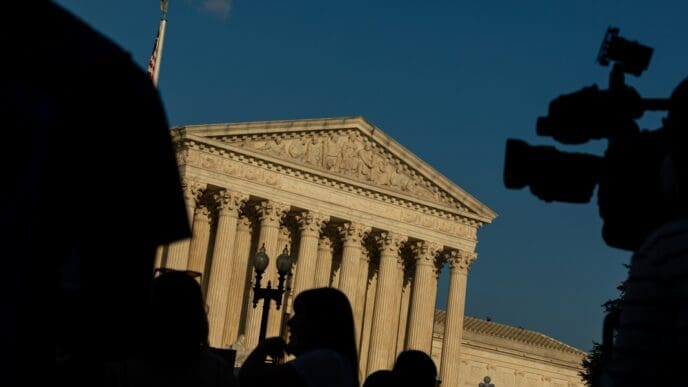The Supreme Court seems inclined to alter the framework for environmental assessments of major infrastructure initiatives. This movement could soon facilitate streamlined project approvals, a shift potentially benefiting President-elect Donald Trump, aligning with his earlier criticisms of cumbersome regulatory processes.
In a pivotal case under review, the court is assessing whether to approve an 88-mile rail line in Utah, a project that faces objections from environmental advocates. These advocates argue that reducing the scope of required environmental reviews undermines essential protections.
The debate centers around the National Environmental Policy Act, a foundational law enacted in 1970 during the early environmental movement. Critics, including some legal experts, find that this law has become a legal barrier that impedes progress on infrastructure, as articulated by Paul Clement, a seasoned Supreme Court attorney. He emphasized that the current regulatory framework not only delays projects but also unnecessarily inflates costs.
During his previous term, Trump frequently highlighted what he considered excessive environmental studies, positioning these regulations as counterproductive to economic growth. However, a recent legislative adjustment mandates that many of these reviews should not exceed 150 pages, rather than extending to thousands of pages as before.
The high court seems to show bipartisan leanings, with some justices expressing concern about whether federal courts should interfere with agency decisions regarding the downstream environmental impacts of significant projects. These considerations arise from plans to construct a rail line linking Utah’s Uinta Basin and Colorado to existing rail networks to transport oil and gas more efficiently. The focal point of the court’s inquiry is whether the Surface Transportation Board adequately evaluated the environmental effects not only of the railway itself but also of the subsequent oil processing.
Eagle County, Colorado, together with several environmental groups, has challenged the approval of this railway, asserting that its environmental assessment was insufficiently comprehensive. Sam Sankar, representing some of the plaintiffs, warns that overlooking downstream impacts could have widespread consequences, stressing the necessity for the public to remain informed of government actions’ health impacts.
At the hearing, justices like Elena Kagan and Ketanji Brown Jackson questioned the practicality of addressing downstream effects, noting the potential disconnect between these impacts and the initial project approval. They argued that the agency’s lack of authority to halt projects based on these downstream effects diminishes the significance of such comprehensive reviews.
Justice Gorsuch recused himself from the deliberations, raising questions about the implications of his withdrawal for the court’s final decision. His absence comes amid whispers of potential conflicts of interest involving a financial stakeholder connected to him, as noted by Democratic members of Congress.
The Supreme Court’s forthcoming decision could redefine the balance between necessary environmental oversight and the advancement of infrastructure projects, potentially reshaping U.S. policy in this area. The implications of this landmark case will unfold as the justices render their decision next year.
Source: CNN














